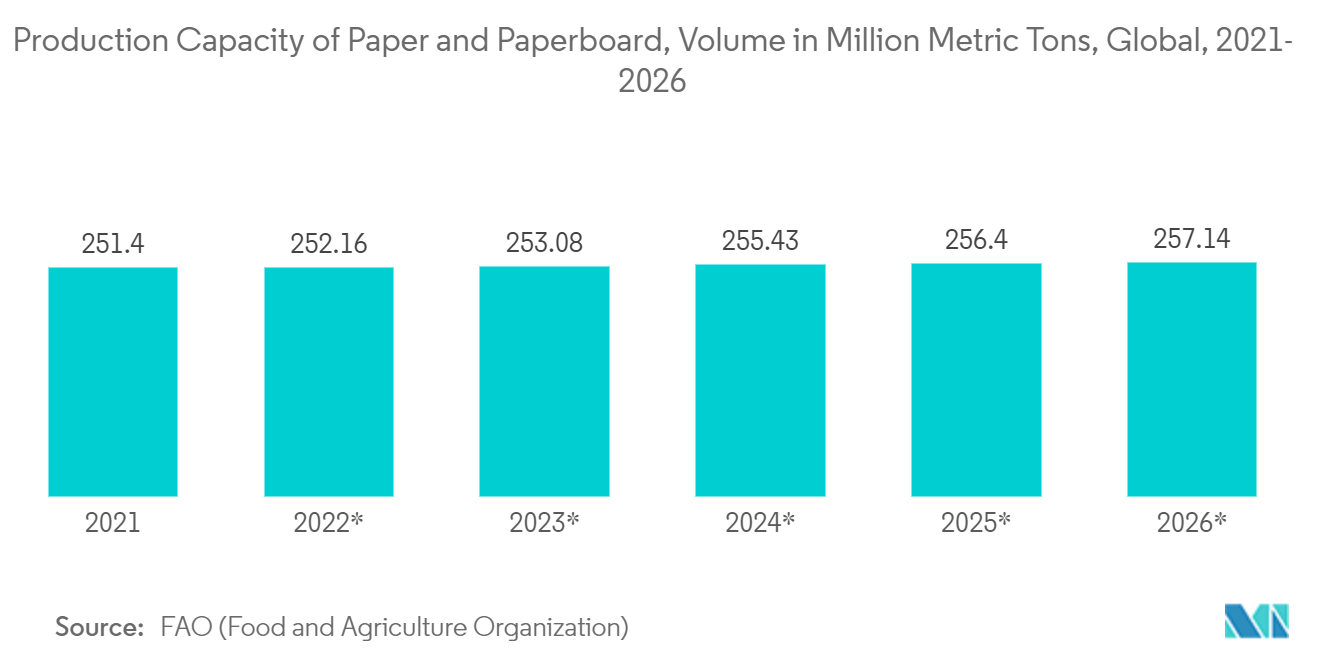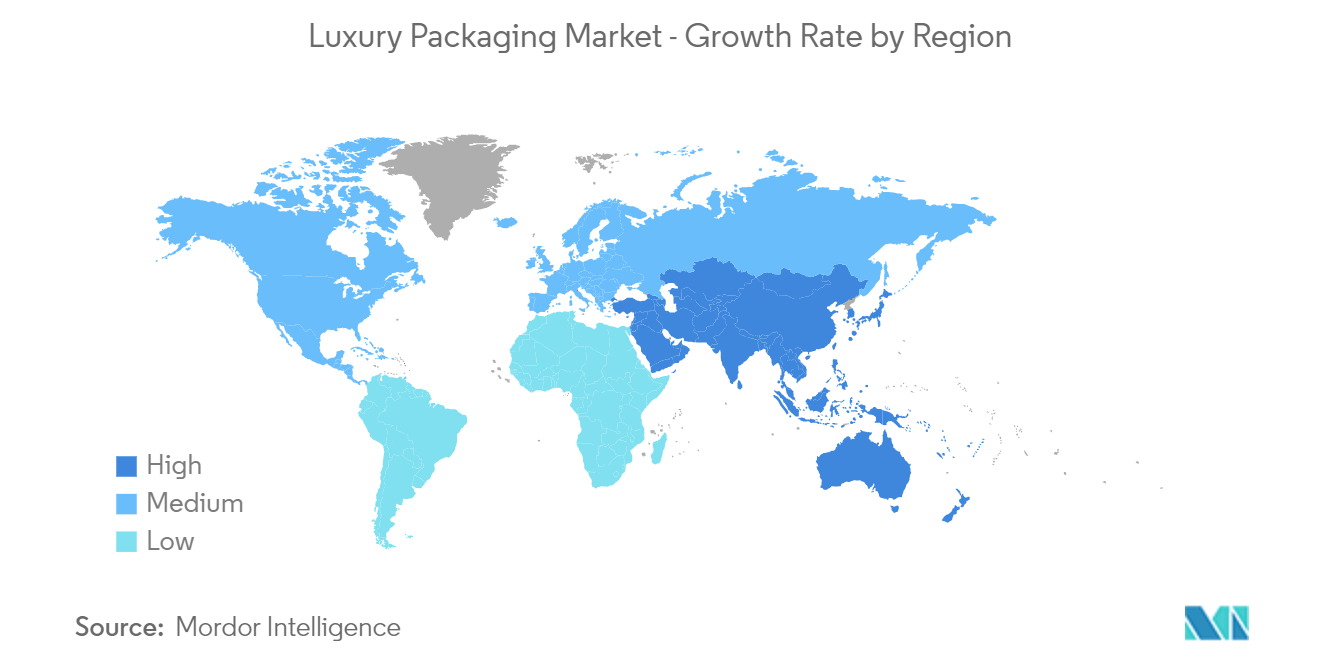Market Trends of Luxury Packaging Industry
This section covers the major market trends shaping the Luxury Packaging Market according to our research experts:
Increased Usage of Sustainable and Bio-Degradable Materials such as Paperboard may Drive the Market Growth
- Paperboard is one of the most commonly used materials in packaging. Some of the other commonly used materials include metal, glass, plastic, and wood, among others. Most of these materials are easily sourced and, at the same time, help to establish a sense of premium quality in the minds of customers.
- Paper and paperboard have maintained a strong position in luxury and premium packaging with their ability to serve as the canvas for flawless graphics and attractive decoration. The features, such as laminations, unique coatings, and super embossing and debossing effects, make papers much more appealing in the packaging of luxury items. These packaging materials also provide superior strength and smoothness.
- Papers have always been popular label materials in the high-end wine and spirits segments. Craft beer brands use paper labels to describe or advertise the products' premium or handcrafted values.
- In addition, the five-star fragrance company XOXO's Eau de Parfum spray features diamond glitter coating, multi-color printing, foil stamping, and embossing. The carton is made from Invercote G paperboard and offset printed with two spot colors and dense black inks, as well as UV gloss spot coating.These features are meant to attract customers to purchase the product.
- For instance, 31 countries reported a combined production capacity of 251.4 million metric tons of paper and paperboard last year, according to FAO (Food and Agriculture Organization) data. By 2026, it is anticipated to increase to 257.143 million metric tons.

Asia Pacific to Witness a Significant Growth Rate
- The Asia-Pacific region is expected to grow substantially in the forecast period, owing to the increase in disposable income and consumer spending on luxury products. Large populations and massive urbanization have led to a rise in the adoption of urban lifestyles due to changing consumer patterns and the rising demand for luxurious products. For instance, according to the National Bureau of Statistics of China, about 64.7% of the total population lived in cities last year.
- Further, sustainable packaging is driving the market in the Asia-Pacific region, as the manufacturers of high-end products are focusing on producing packaging with the help of biodegradable materials. Major international brands focus on eco-friendly luxury packaging solutions to maintain sustainability goals.
- The primary vital factors driving the market's growth include massive product launches in the fashion and cosmetic sectors. The major international brands are eyeing emerging economies, such as China, India, etc., to set up their stores in these countries, as they pose various growth prospects.
- Also, the rise in penetration of online retail and travel retail, increasing innovations in technologies in luxury packaging, and others are among various other factors driving market growth in the region.
- China is one of the economies increasingly targeted by prominent luxury brands, as the country is fast becoming the world's largest consumer of luxury goods. Chinese consumers are also looking for easy-to-use and quality food products. A surge in online retailing in China is expected to drive the demand for luxury packaging solutions.

